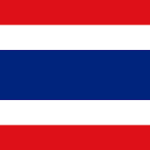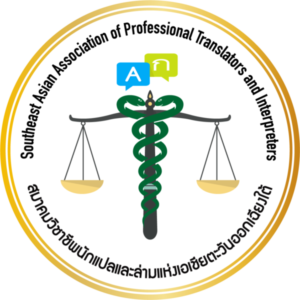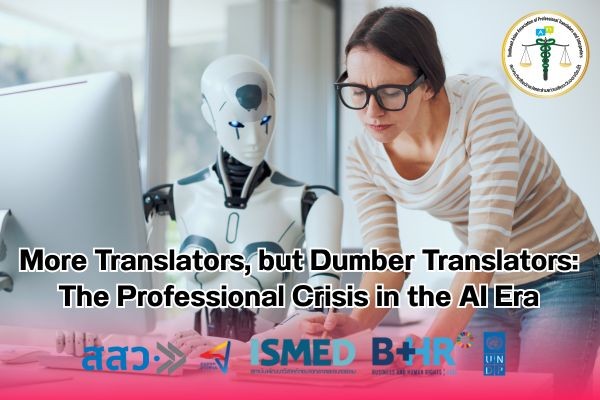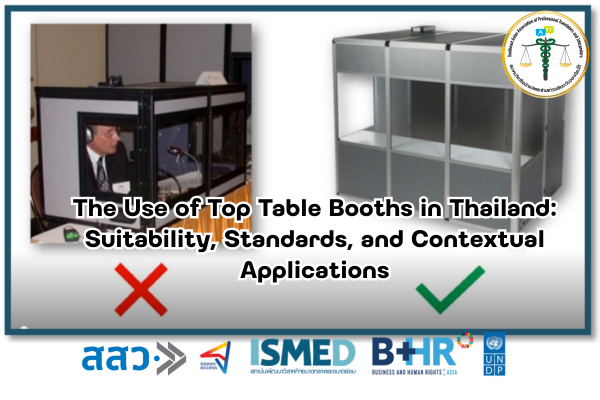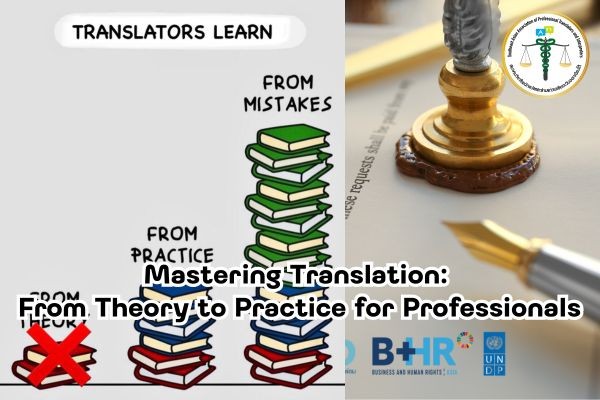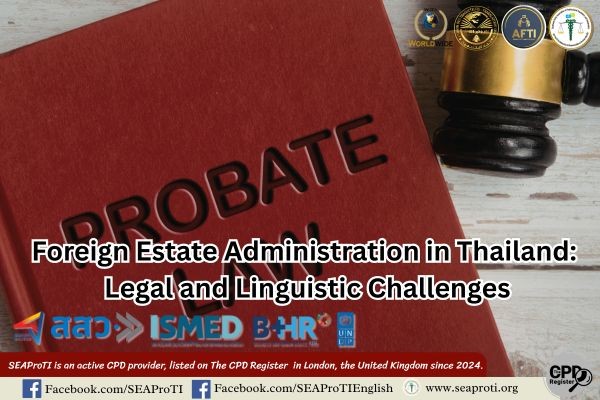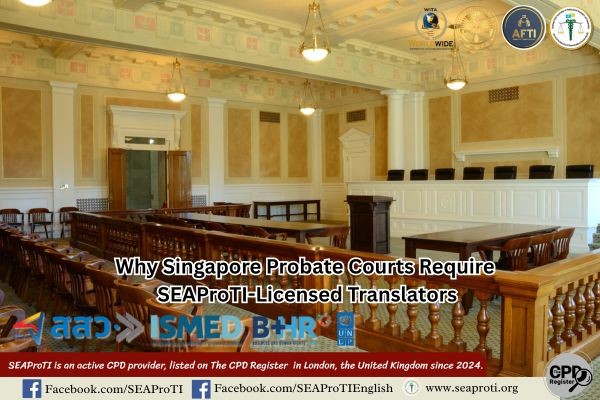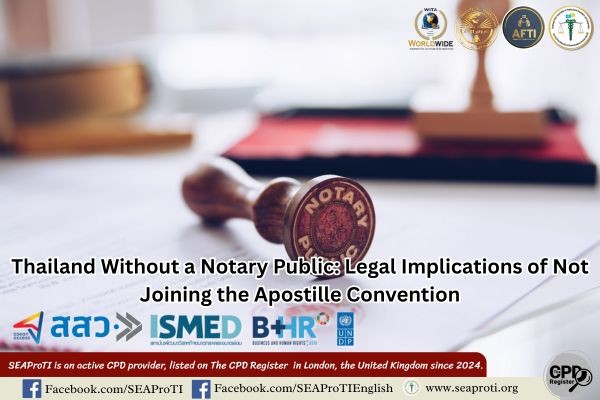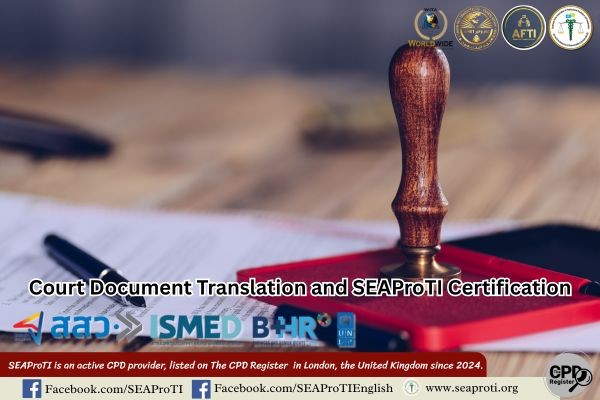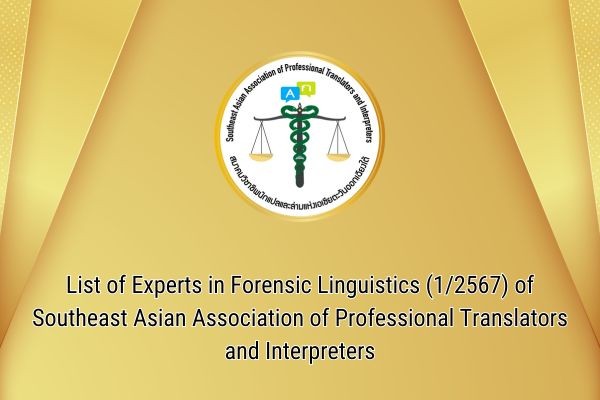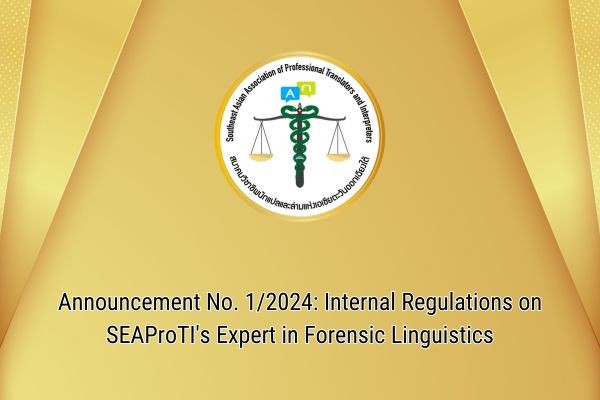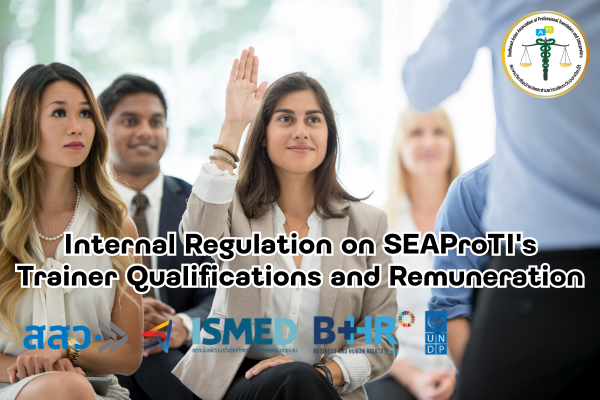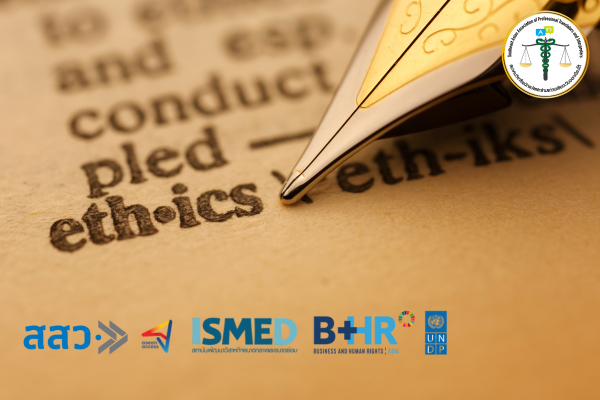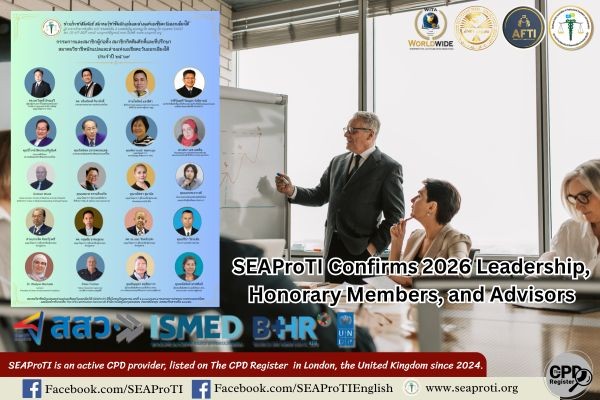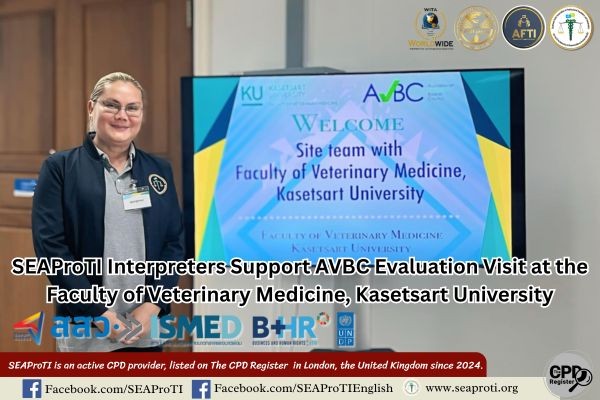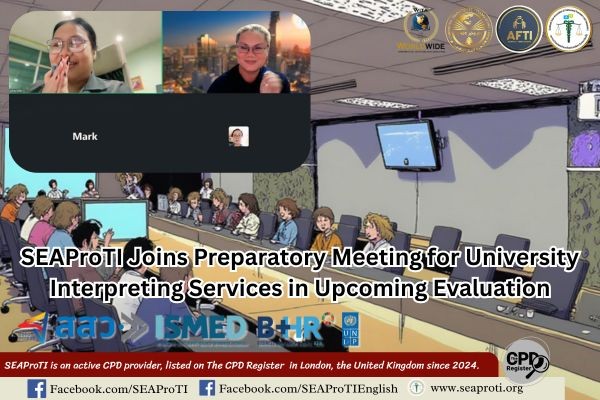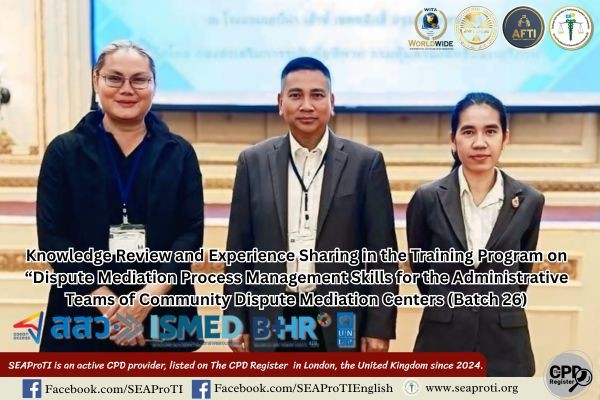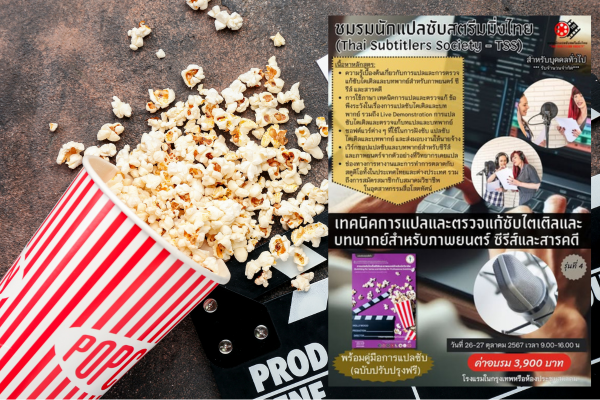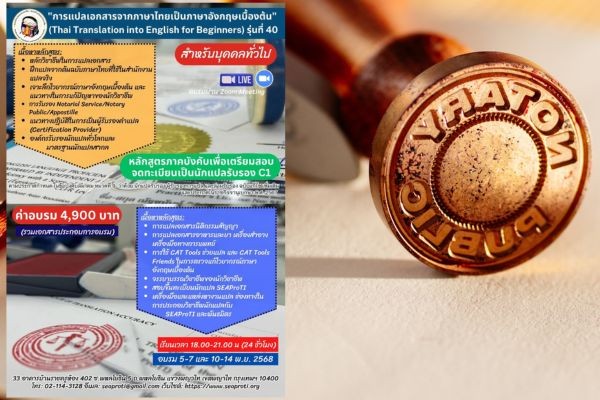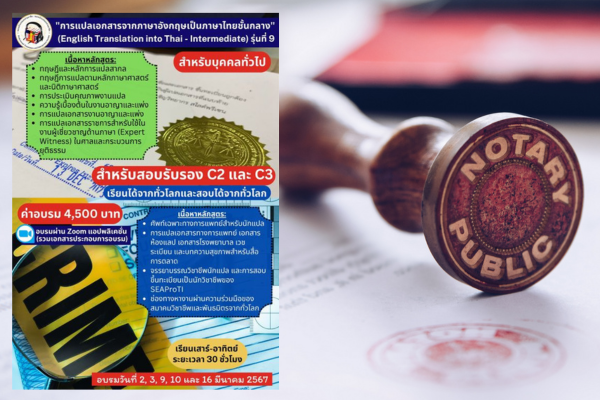More Translators, but Dumber Translators: The Professional Crisis in the AI Era
23 August 2025, Bangkok – The rapid rise of Artificial Intelligence (AI) has reshaped the global translation industry. Machine Translation (MT) systems, including Google Translate, DeepL, and more recently, generative AI models such as ChatGPT, have democratized access to translation. Anyone can now translate texts within seconds, which has led to a significant increase in the number of individuals identifying themselves as translators. However, this quantitative growth has been accompanied by a qualitative decline: many of these translators lack the ability to provide professional linguistic reasoning. This paradox has given rise to what may be called the phenomenon of the “dumber translator.”
The Rise of Translators in the AI Era
AI has dramatically lowered the barriers to entry in translation by reducing both time and cost (Kenny & Doherty, 2020). Individuals without formal linguistic training can now participate in the profession, particularly through online platforms and low-cost translation services. This has led to an unprecedented surge in the number of practitioners. Yet this democratization raises the question of whether “more translators” necessarily means “better translators.”
The “Dumber Translator” Phenomenon
While AI offers productivity gains, overreliance on it fosters de-skilling among translators (Pym, 2013). Many newcomers rely heavily on AI outputs without critical engagement, leaving them unable to justify word choices, cultural adaptations, or syntactic structures. This inability becomes especially problematic in legal and governmental contexts where translators are expected to act as expert witnesses and explain why specific terms or phrasing were chosen (Moorkens, 2020).
In this sense, the translator risks being perceived not as a linguistic expert but as a mere conduit for machine-generated text. This undermines the professional identity of translators and erodes their credibility in institutional settings.
Implications for the Profession
Declining Translation Quality – Clients, courts, and government bodies increasingly question the reliability of AI-dependent translators.
Erosion of Professional Image – If translators cannot provide linguistic reasoning, the profession risks being devalued in the eyes of society.
Commoditization of Translation – Translation may increasingly be seen as a cheap, machine-driven commodity rather than an expert-driven service (Koskinen & Paloposki, 2019).
Pathways Forward
To prevent further professional decline, translators must embrace AI critically rather than dependently. Key strategies include:
Using AI for augmentation, not substitution – treating AI as a tool that assists but does not replace human expertise.
Developing domain-specific knowledge – particularly in law, medicine, and diplomacy, where cultural and legal nuances exceed AI’s current capabilities.
Maintaining linguistic reasoning skills – ensuring the ability to explain translation decisions in professional and legal contexts.
Upholding ethical standards – maintaining accountability even when AI tools are used in the process (SEAProTI, 2025).
Conclusion
The paradox of “more translators, but dumber translators” reflects the crisis of translation in the AI era. While AI has broadened access to the profession, excessive reliance on it has led to a loss of critical skills and accountability. Unless translators reposition themselves as experts who can both harness AI and justify their linguistic decisions, the future of the profession may be at risk. Responsible use of AI, combined with specialized knowledge and ethical responsibility, offers a sustainable path forward for translators in the 21st century.
References
- Kenny, D., & Doherty, S. (2020). Machine translation and the changing landscape of translation studies. Routledge.
- Koskinen, K., & Paloposki, O. (2019). The Routledge handbook of translation and ethics. Routledge.
- Moorkens, J. (2020). A translator’s place in the age of artificial intelligence. Translation Spaces, 9(1), 111–131. https://doi.org/10.1075/ts.00015.moo
- Pym, A. (2013). Translation skill-sets in a machine-translation age. Meta: Translators’ Journal, 58(3), 487–503. https://doi.org/10.7202/1025047ar
- Southeast Asian Association of Professional Translators and Interpreters (SEAProTI). (2025). Professional guidelines on AI-assisted translation and interpreting. SEAProTI Press.
* About SEAProTI Certified Translators, Translation Certifiers, and Certified Interpreters
The Southeast Asian Association of Professional Translators and Interpreters (SEAProTI) has formally established criteria for the registration of “Certified Translators,” “Translation Certification Providers,” and “Certified Interpreters.” These provisions are codified under Chapters 9 and 10 of the Royal Gazette, published by the Secretariat of the Cabinet, Office of the Prime Minister of the Kingdom of Thailand, dated 25 July 2024, Vol. 141, Part 66 Ngor, p. 100. The Royal Thai Government Gazette
** The Council of State of Thailand has proposed enacting a Royal Decree authorizing registered translators, along with translation certifiers recognized by professional associations or accredited language institutions, to certify translations. (Letter to SEAProTI dated 28 April 2025)
*** SEAProTI is the first professional association in Thailand and Southeast Asia to establish a certification system for translators, translation certifiers, and interpreters.
Head Office: Baan Ratchakru Building, No. 33, Room 402, Soi Phaholyothin 5, Phaholyothin Road, Phaya Thai Subdistrict, Phaya Thai District, Bangkok 10400, Thailand. Email: hello@seaproti.com Tel.: (+66) 2-114-3128 (Office hours: Monday–Friday, 09:00–17:00)
จำนวนนักแปลมีมากขึ้น แต่นักแปลโง่ลง: วิกฤตวิชาชีพยุค AI
23 สิงหาคม 2568, กรกฎาคม – การมาถึงของปัญญาประดิษฐ์ (Artificial Intelligence: AI) โดยเฉพาะในด้านการแปลด้วยเครื่อง (Machine Translation: MT) ได้สร้างการเปลี่ยนแปลงเชิงโครงสร้างแก่วงการแปลทั่วโลก เครื่องมืออย่าง Google Translate, DeepL และ ChatGPT ทำให้ผู้คนจำนวนมากสามารถเข้าถึงการแปลได้ในทันที ส่งผลให้มี “นักแปล” เกิดขึ้นมากกว่าที่เคย ทว่าปรากฏการณ์ที่ควรค่าแก่การวิพากษ์คือ นักแปลจำนวนไม่น้อยกลับขาดความสามารถในการอธิบายเชิงวิชาชีพและเชิงภาษาศาสตร์ อันนำไปสู่ภาวะที่เรียกได้ว่า “นักแปลโง่ลง”
การเพิ่มขึ้นของนักแปลในยุค AI
AI ลดต้นทุนและเวลาในการแปล ทำให้การเข้าสู่วิชาชีพแปลเป็นไปอย่างง่ายดาย (Kenny & Doherty, 2020) คนทั่วไปสามารถแปลบทความ เว็บไซต์ หรือเอกสารด้วยตนเองโดยไม่จำเป็นต้องผ่านการฝึกฝนด้านภาษาเชิงลึก ส่งผลให้จำนวนผู้ประกอบอาชีพแปลทั้งในเชิงสมัครเล่นและเชิงอาชีพเพิ่มสูงขึ้น
ภาวะ “นักแปลโง่ลง”
แม้นักแปลจะมากขึ้น แต่คุณภาพโดยเฉลี่ยกลับลดลง เนื่องจากการใช้ AI แบบพึ่งพิง (dependency) ส่งผลให้เกิดภาวะ de-skilling (Pym, 2013) นักแปลรุ่นใหม่จำนวนมากไม่สามารถอธิบายเหตุผลในการเลือกคำศัพท์หรือโครงสร้างประโยคได้ และมักไม่สามารถรับผิดชอบเมื่อถูกสอบถามในบริบทวิชาชีพ เช่น ศาล หน่วยงานรัฐ หรือการแปลเอกสารกฎหมาย (Moorkens, 2020)
สิ่งนี้ทำให้ “นักแปล” กลายเป็นเพียงผู้ถ่ายทอดผลลัพธ์จากเครื่องจักร มากกว่าผู้เชี่ยวชาญทางภาษา ซึ่งขัดกับบทบาทดั้งเดิมของวิชาชีพที่ต้องใช้ทักษะการวิเคราะห์ ความรู้ด้านวัฒนธรรม และการอธิบายเชิงภาษาศาสตร์
ผลกระทบต่อวิชาชีพแปล
- คุณภาพงานแปลลดลง – ลูกค้าและศาลเริ่มตั้งคำถามต่อความน่าเชื่อถือของงานแปล
- ภาพลักษณ์วิชาชีพเสียหาย – หากนักแปลจำนวนมากไม่สามารถให้เหตุผลเชิงวิชาชีพได้ ความไว้วางใจต่อวิชาชีพจะแปรเปลี่ยนเป็นความสงสัย
- การแปลถูกทำให้เป็นสินค้าโภคภัณฑ์ (commoditization) – งานแปลอาจถูกมองว่าเป็นเพียง “ผลผลิตจากเครื่องจักร” ไม่ใช่การบริการที่ต้องอาศัยความเชี่ยวชาญ (Koskinen & Paloposki, 2019)
แนวทางแก้ไข
เพื่อป้องกันไม่ให้วิชาชีพเสื่อมถอย นักแปลควรปรับตัวดังนี้:
- ใช้ AI อย่างมีวิจารณญาณ (augmentation ไม่ใช่ dependency)
- พัฒนาความรู้เฉพาะด้าน เช่น กฎหมาย การแพทย์ และการทูต ซึ่งต้องการการตีความที่ลึกซึ้ง
- รักษาทักษะการให้เหตุผลเชิงภาษา (linguistic reasoning) เพื่ออธิบายการเลือกคำได้อย่างเป็นระบบ
- ยึดจริยธรรมวิชาชีพ โดยรับผิดชอบต่อผลงานการแปล แม้ใช้ AI เป็นส่วนช่วย (SEAProTI, 2025)
บทสรุป
ยุค AI ทำให้จำนวนนักแปลเพิ่มขึ้นอย่างก้าวกระโดด แต่การพึ่งพาเครื่องจักรมากเกินไปได้สร้าง “นักแปลโง่ลง” ที่ขาดความสามารถในการอธิบายและรับผิดชอบในเชิงวิชาชีพ หากนักแปลยังคงพึ่งพา AI โดยไม่เสริมสร้างทักษะที่แท้จริง อนาคตของวิชาชีพแปลอาจตกอยู่ในภาวะวิกฤต การใช้ AI อย่างมีสติ การพัฒนาความรู้เฉพาะด้าน และการรักษามาตรฐานวิชาชีพจึงเป็นหนทางรอดที่แท้จริง
เอกสารอ้างอิง
- Kenny, D., & Doherty, S. (2020). Machine translation and the changing landscape of translation studies. Routledge.
- Koskinen, K., & Paloposki, O. (2019). The Routledge handbook of translation and ethics. Routledge.
- Moorkens, J. (2020). A translator’s place in the age of artificial intelligence. Translation Spaces, 9(1), 111–131. https://doi.org/10.1075/ts.00015.moo
- Pym, A. (2013). Translation skill-sets in a machine-translation age. Meta: Translators’ Journal, 58(3), 487–503. https://doi.org/10.7202/1025047ar
- Southeast Asian Association of Professional Translators and Interpreters (SEAProTI). (2025). Professional guidelines on AI-assisted translation and interpreting. SEAProTI Press.
เกี่ยวกับนักแปลรับรอง ผู้รับรองการแปล และล่ามรับรองของสมาคมวิชาชีพนักแปลและล่ามแห่งเอเชียตะวันออกเฉียงใต้
* สมาคมวิชาชีพนักแปลและล่ามแห่งเอเชียตะวันออกเฉียงใต้ (SEAProTI) ได้ประกาศหลักเกณฑ์และคุณสมบัติผู้ที่ขึ้นทะเบียนเป็น “นักแปลรับรอง (Certified Translators) และผู้รับรองการแปล (Translation Certification Providers) และล่ามรับรอง (Certified Interpreters)” ของสมาคม หมวดที่ 9 และหมวดที่ 10 ในราชกิจจานุเบกษา ของสำนักเลขาธิการคณะรัฐมนตรี ในสำนักนายกรัฐมนตรี แห่งราชอาณาจักรไทย ลงวันที่ 25 ก.ค. 2567 เล่มที่ 141 ตอนที่ 66 ง หน้า 100 อ่านฉบับเต็มได้ที่: นักแปลรับรอง ผู้รับรองการแปล และล่ามรับรอง
** สำนักคณะกรรมการกฤษฎีกาเสนอให้ตราเป็นพระราชกฤษฎีกา โดยกำหนดให้นักแปลที่ขึ้นทะเบียน รวมถึงผู้รับรองการแปลจากสมาคมวิชาชีพหรือสถาบันสอนภาษาที่มีการอบรมและขึ้นทะเบียน สามารถรับรองคำแปลได้ (จดหมายถึงสมาคม SEAProTI ลงวันที่ 28 เม.ย. 2568)
*** สมาคมวิชาชีพนักแปลและล่ามแห่งเอเชียตะวันออกเฉียงใต้ เป็นสมาคมวิชาชีพแห่งแรกในประเทศไทยและภูมิภาคเอเชียตะวันออกเฉียงใต้ที่มีระบบรับรองนักแปลรับรอง ผู้รับรองการแปล และล่ามรับรอง
